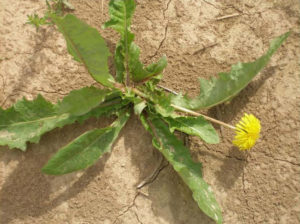Toxin Topic: Anticoagulant Rodenticides
Many horse owners do not realize that baits used to kill mice, rats, and small rodents are also poisonous to horses and other mammals.
Many horse owners do not realize that baits used to kill mice, rats, and small rodents are also poisonous to horses and other mammals.
The University of Kentucky women’s polo team topped three other teams at the United States Polo Association National Intercollegiate Championships April 5 through 10 in Charlottesville, Va., to capture its first national title.

Broodmare farm operators in the southeastern United States are interested in managing tall fescue toxicity because of the pregnancy complications it can cause.
Colic is a general term indicating abdominal pain. The anatomy of the horse’s digestive tract, how the tract works, and the management practices imposed by man seem to contribute to colic’s occurrence.
The Livestock Disease Diagnostic Center (LDDC) at the University of Kentucky now offers a molecular diagnostic assay to detect the H3N8 equine influenza virus (also known as type 2 equine influenza virus) in clinical specimens. Currently only the H3N8 subtype is associated with equine influenza virus outbreaks around the world.
Newborn foals can be susceptible to many viral and bacterial infections. One example is the unique susceptibility of young foals to Rhodococcus equi, a common cause of bronchopneumonia.
According to a recent report issued by the Kentucky State Veterinarian’s office, the number of reported cases of rabies rose from 45 in 2008 to 46 in 2009. However, the number of cases has doubled in the last five years.

Dandelion is widespread across North America and is a commonly occurring plant in all types of pastures and turf. This is one of the most well-known weeds because of its bright yellow flowers and round, gray-to-white seed heads that are borne on a hollow stalk.
The five-year project, titled “Environmental Impacts of Equine Operations,” will focus on three areas: horse and pasture interaction; nutrient management and manure management; and water, soil, and air quality in horse operations.
A research team concluded that repair tissue occupying full-thickness articular lesions is functionally very different from normal articular cartilage.
This brief composting introduction was written as a guide for on-farm composting of horse mortalities and can assist in designing and troubleshooting composting systems.
Placentitis, which often is caused by an ascending infection that enters the mare’s uterus through the cervix, is the single most important cause of premature delivery of a foal.
It’s generally known that a mare gains weight during gestation, but University of Kentucky (UK) researchers are studying how much weight a normal mare should gain for the health of the fetus.
Limited funding prevented Tetiana Kuzmina, PhD, from completing her parasitology research in her native Ukraine. But after receiving the Albert and Lorraine Clay fellowship, the scientist was able to continue her research at the University of Kentucky’s (UK) Gluck Equine Research Center.
“The fellowship benefits both the Gluck Equine Research Center and the visiting scien
Jennifer Janes, DVM, a graduate student in the Department of Veterinary Science at the University of Kentucky, was selected as the 2009 recipient of the American Association of Equine Practitioners (AAEP) Foundation Past Presidents’ Research Fellow award, which will support her project on orthopedic pathology and genetic association of wobbler syndrome (cervical stenotic myelopathy).
The University of Kentucky (UK) College of Agriculture’s Nancy Cox, MS, PhD, is one of Kentucky’s visionaries and innovators who was honored at Bluegrass Tomorrow’s 20th Anniversary Vision Awards/InnoVision Breakfast on Oct. 30 at the Hyatt Regency in Lexington.
Cox, associate dean for research in UK's College of Agriculture, Kentucky Agricultural Experiment
Stay on top of the most recent Horse Health news with